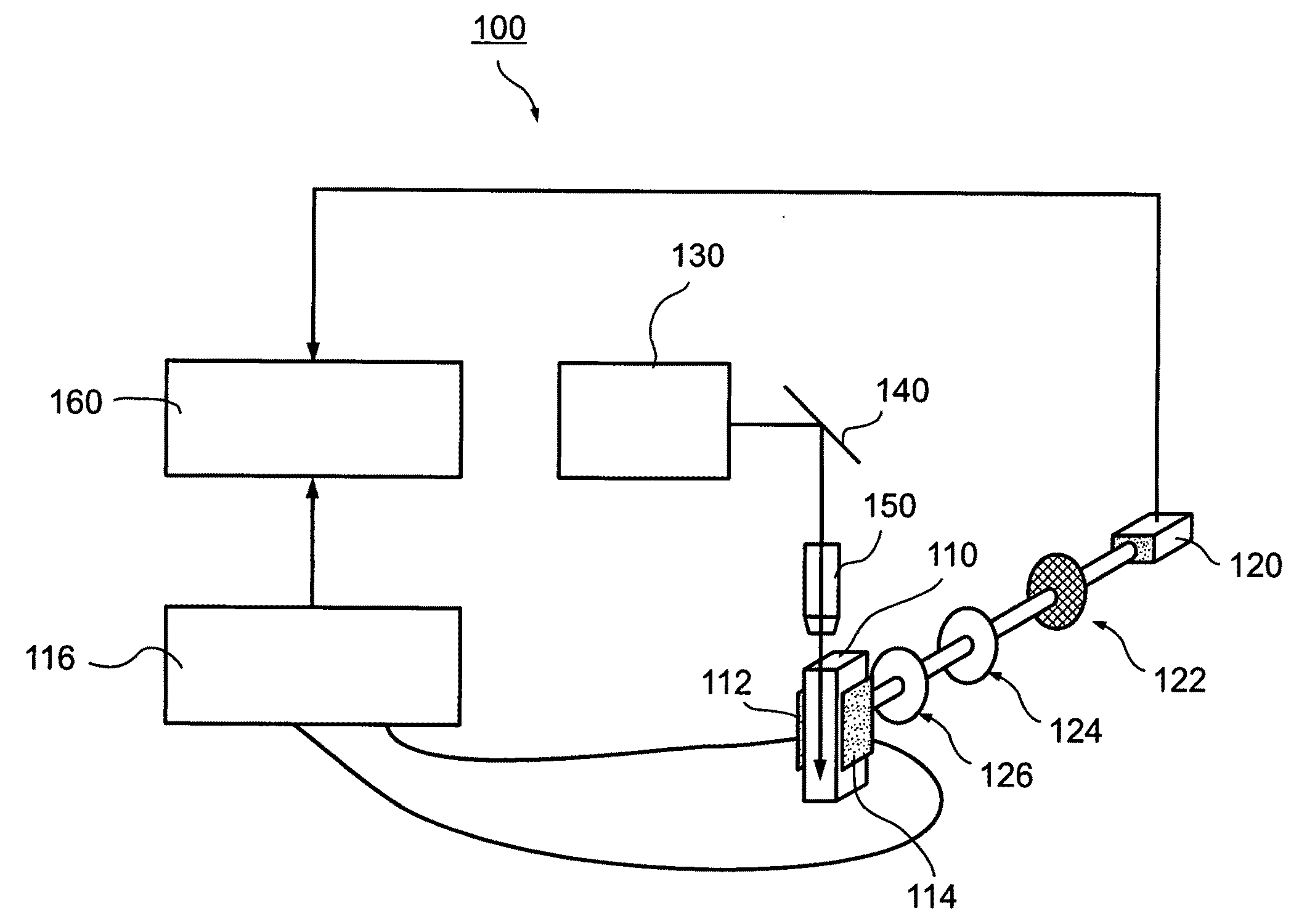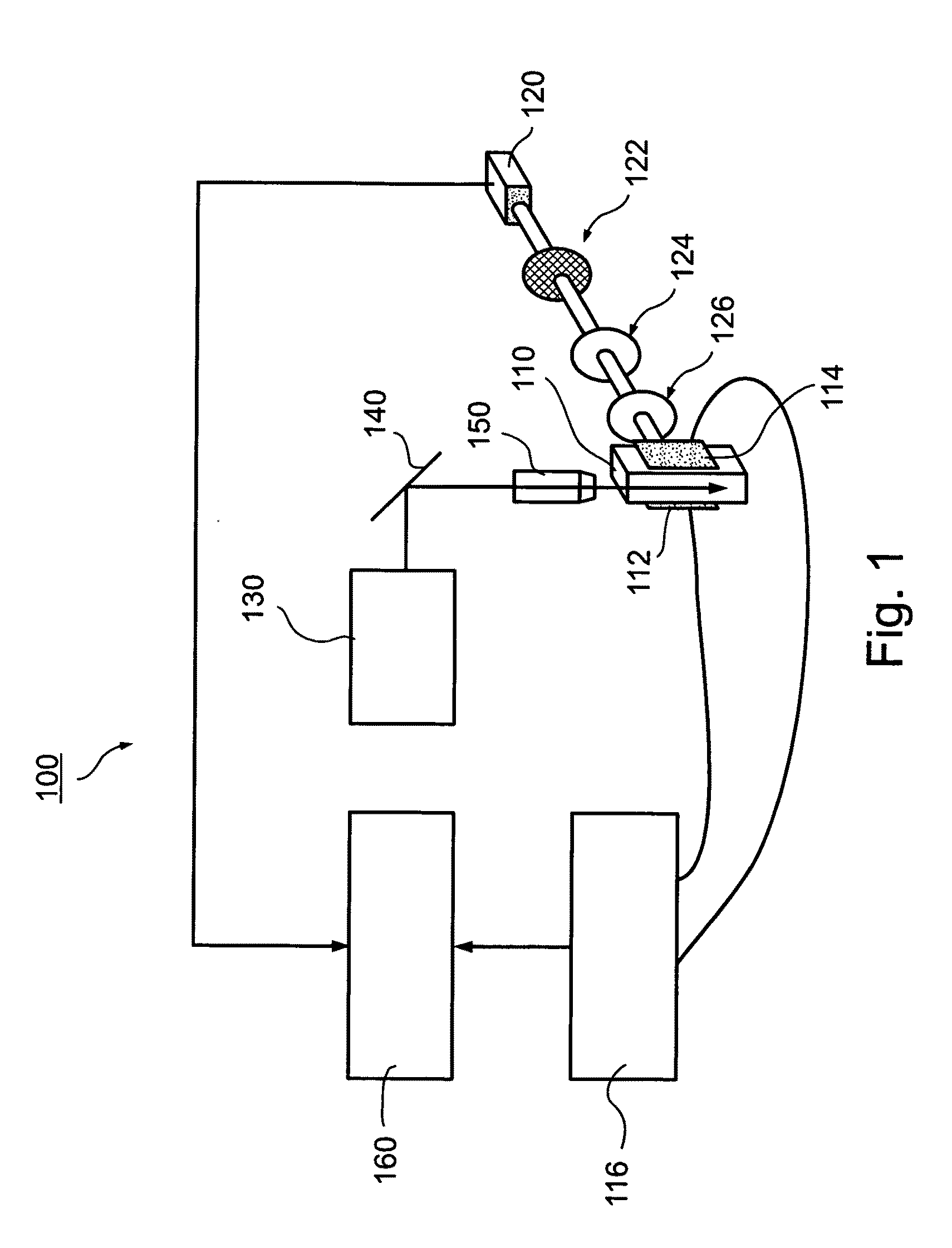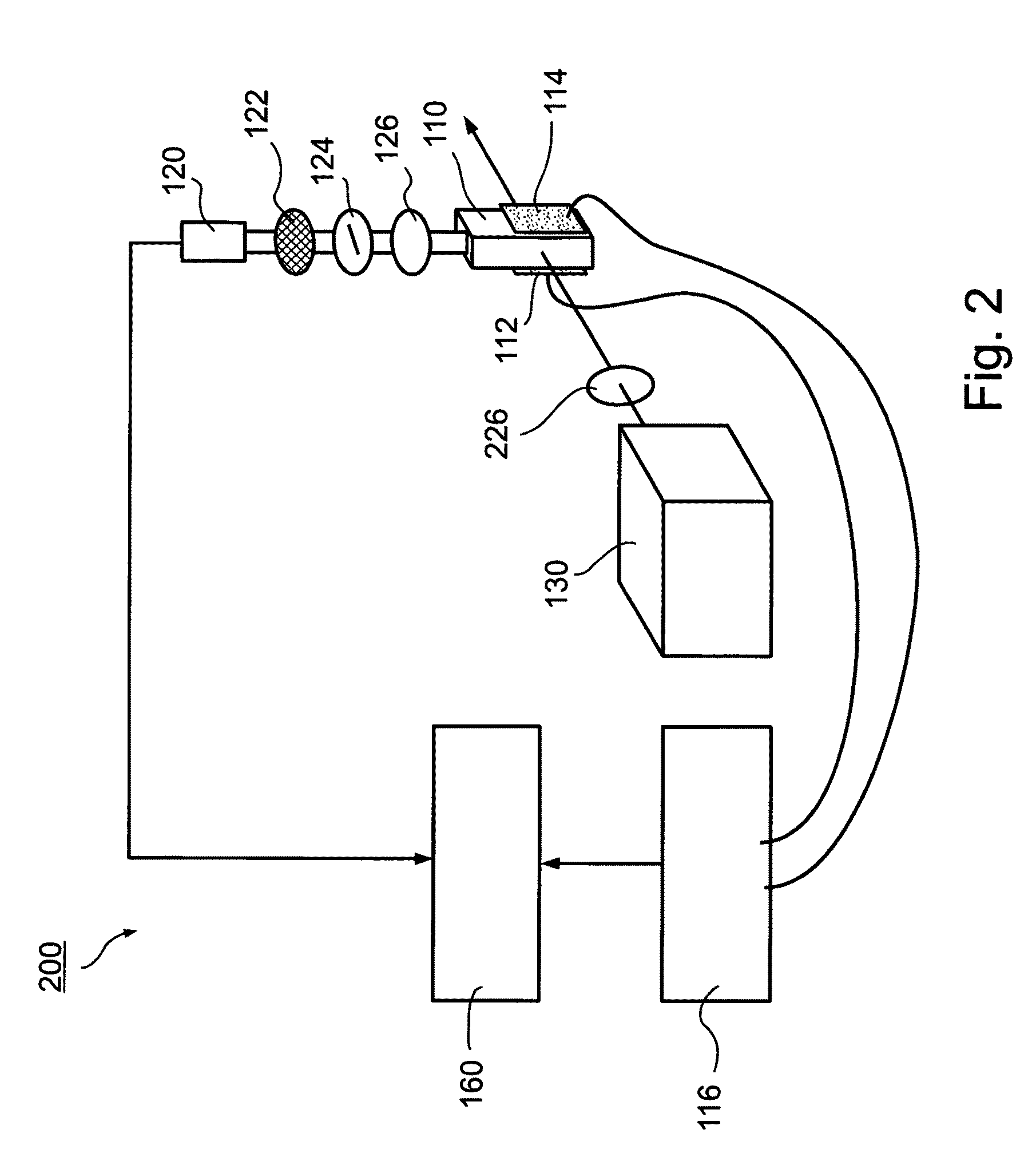Method and system for detecting a target within a polupation of molecules
a molecule and target technology, applied in the field of detecting a target within a population of molecules, can solve the problems of variation, time-consuming and laborious, and high level of inaccuracy associated with these techniques, and achieve the effect of increasing the signal-to-noise ratio of detection signals
- Summary
- Abstract
- Description
- Claims
- Application Information
AI Technical Summary
Benefits of technology
Problems solved by technology
Method used
Image
Examples
examples
[0163]Reference is now made to the following examples, which together with the above descriptions illustrate the invention in a non limiting fashion.
[0164]As noted above, direct detection of fluorescent light is limited by the background noise contributed mainly by the light scattered from the solvent (e.g. elastic Rayleigh scattering of the laser wavelength and red shifted Raman scattering). Residual fluorescence increases rapidly with the energy of the exciting photon. Thus working in the red part of the spectrum will reduce the background problem. A rough estimation for the direct detection limitation due to Raman scattering is considered in the following calculation. An excitation laser beam (Argon laser model 262A-01, λ=488 nm, output power P=1 mW, beam waist ω=20 μm) is focused into a 0.5×5 mm (I.D) large ratio rectangle borosilicate tube filled with water based buffer and 6-FAM (6-Carboxyfluorescein) as the fluorescent dye. In water, the dominant Raman line is produced by the...
PUM
| Property | Measurement | Unit |
|---|---|---|
| Concentration | aaaaa | aaaaa |
| Magnetic field | aaaaa | aaaaa |
| Structure | aaaaa | aaaaa |
Abstract
Description
Claims
Application Information
 Login to View More
Login to View More - R&D
- Intellectual Property
- Life Sciences
- Materials
- Tech Scout
- Unparalleled Data Quality
- Higher Quality Content
- 60% Fewer Hallucinations
Browse by: Latest US Patents, China's latest patents, Technical Efficacy Thesaurus, Application Domain, Technology Topic, Popular Technical Reports.
© 2025 PatSnap. All rights reserved.Legal|Privacy policy|Modern Slavery Act Transparency Statement|Sitemap|About US| Contact US: help@patsnap.com



